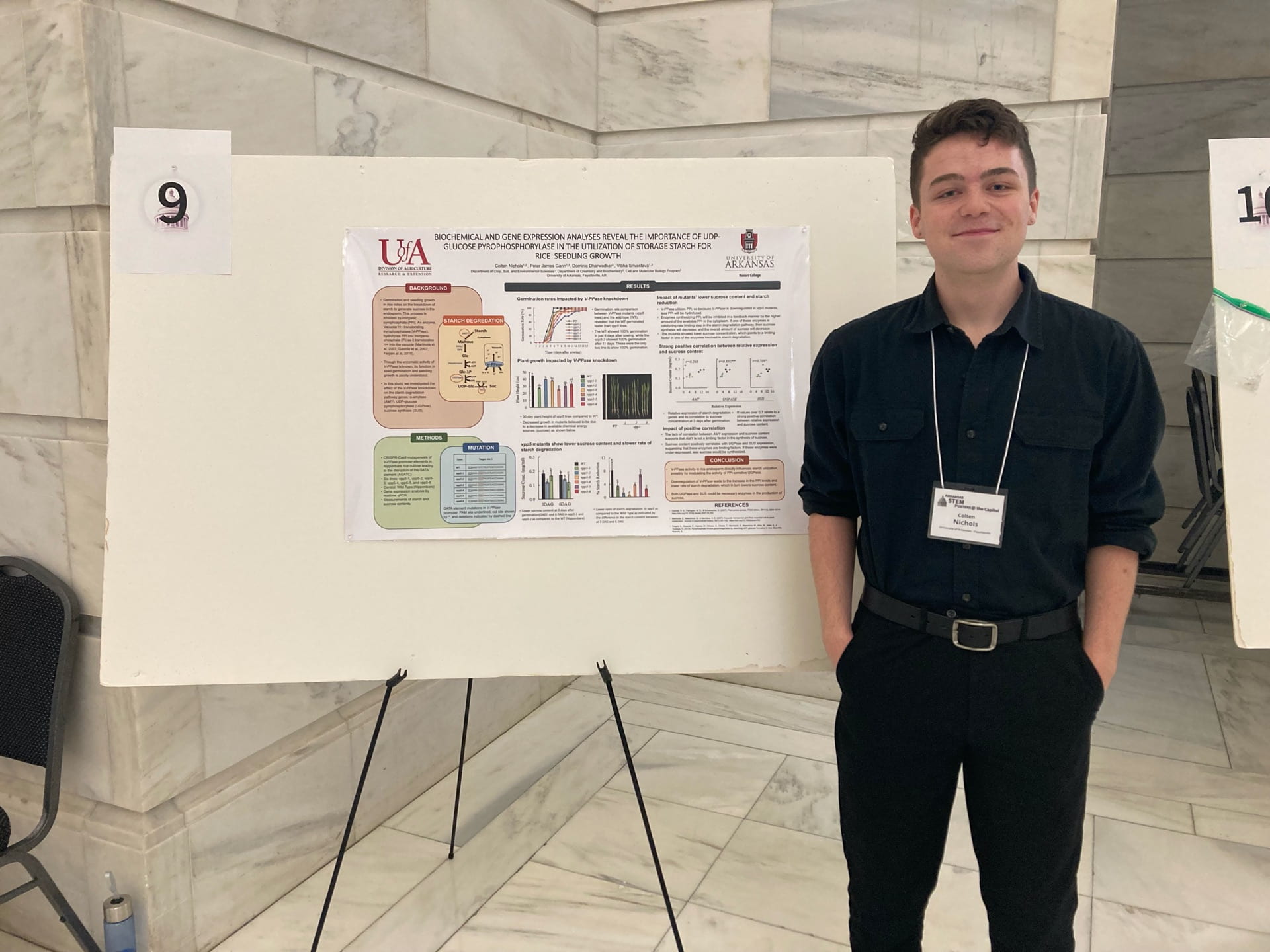Colten Nicholas is an honors student majoring in crop science and biochemistry from Van Buren, Arkansas. This semester, Colten presented his research on transgenic rice species at the State Capitol Building in Little Rock.
On February 14, I had the opportunity to represent the University of Arkansas by presenting my research at the Capitol in Little Rock. This was the “Arkansas STEM Posters at the Capitol” event where Arkansas legislators and government officials attended the event to hear about the research undergraduate students have been conducting at various Arkansas colleges. There was a total of 11 institutions with 72 total student presenters. I was one of the seven students that the University of Arkansas Honors College sent to represent our university.
I work in a crop biotechnology lab on campus under professor Vibha Srivastava, my honors thesis mentor who has been a massive advocate for my growth as a researcher. In our lab, we work with transgenic rice species. Essentially, these are genetically enhanced plant lines that we create and examine to better understand how molecular plant biology works and can be improved. The research I presented on was done in collaboration with a recent graduate of the Cellular and Molecular Biology Program, Peter James Gann. Our research focused on the mutant rice line vpp5. Our lab has produced research to support that this mutated rice line decreases chalkiness in rice grains, or the amount of air pockets trapped within a rice granule. When processing occurs to de-husk and clean grains, high amounts of chalkiness result in more broken granules, and overall, a decreased amount of nutrients. Our research wanted to see how the mutation that produces the vpp5 line would impact seedling germination and the starch biosynthesis pathway.

Here, I’m plating rice seedlings on 1⁄2 MS media in the tissue culture lab for germinative analysis.
To prepare for this event I had to create a poster and abstract. The Honors College was gracious in offering to print my poster for this opportunity. While I enjoy talking about my research, there is always a certain degree of anxiety I associate with public speaking. I practiced my research presentation over ten times to prepare for this event. The largest challenge was trying to include everything I wanted to say in a bite-sized short presentation.
The event was split into two major presentation blocks. Half of the students presented in Block A. After this round of presentations was done, the other half of the students presented in Block B. This allowed participants to attend other students’ presentations and reduced the number of students presenting at one time. I appreciated the opportunity to listen to other speakers. Posters were set up in the atrium of the Capitol Building, which was very open and gave everyone an equal opportunity to present their posters.
My favorite part of attending this event was surprisingly not talking to legislators (even though that was super cool), but instead talking to other U of A students about their research. Since most of my research is within the sphere of agriculture, I don’t often get to hear about other fields of research at the University of Arkansas. Listening to the innovative research being conducted at my home institution in mechanical engineering, computer science, chemistry, and physics was honestly very inspiring. This entire event reinvigorated my passion for research.


